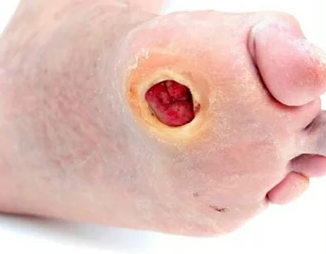Diabetic foot is one of the most common complications of diabetic patients. Mistakes in clinical reasoning due to knowledge deficiencies, cognitive biases, and dual-process thinking can easily lead to serious misdiagnosis, which may lead to diabetic foot ulcers (DFU). Foot disease is one of the main causes of disability and death in diabetic patients. Therefore, for the treatment and prevention of diabetic foot, more and more doctors begin to use diabetic foot biopsy to confirm the condition.
What is a diabetic foot biopsy?
A diabetic foot biopsy is a procedure in which a sample of foot tissue is taken for pathological examination. It can help doctors determine the type and degree of diabetic foot disease in order to develop a more reasonable treatment plan. However, some people may be concerned about whether a diabetic foot biopsy will diagnose foot cancer. In fact, a diabetic foot biopsy does not diagnose foot cancer. Diabetic foot ulcer (DFU) is a skin ulcer on the foot due to factors such as neuropathy, vascular disease, and infection. Treatment for DFU usually involves measures such as rest, keeping the wound clean and moist, topical medications, and infection prevention. The purpose of diabetic foot biopsy is to determine the type and extent of DFU in order to better develop a treatment plan. Foot cancer is a very rare disease that does not usually occur in people with diabetic feet. If a person develops a lump or other abnormal symptoms in the foot, the doctor may order other tests, such as X-rays, MRI, or CT, to find out whether foot cancer is present.
When an ulcer is misdiagnosed, should a biopsy be considered?
Generally speaking, a diabetic foot biopsy should be considered if the diabetic foot ulcer does not respond well after treatment, the condition recurs, the ulcer area is large, or the lesion is not easy to heal. The type and extent of the lesion can be determined through biopsy so that a more precise treatment plan can be formulated.
In addition, if there are abnormal symptoms of diabetic foot ulcers, such as pain, pus outflow, redness, swelling, etc., these conditions should also be biopsied in time. Because these symptoms may indicate that the foot ulcer has been infected or other complications have occurred, it is necessary to determine the type and extent of the lesion in time so that corresponding treatment measures can be taken.
In conclusion, diabetic foot biopsy is a very important examination method that can help doctors determine the type and degree of DFU so as to better formulate treatment plans. However, a diabetic foot biopsy does not diagnose foot cancer. If a person develops a lump or other unusual symptoms in the foot, the doctor may order other tests to see if cancer of the foot is present.
For more information on Innomed®Silver Ion Dressing, Refer to the Previous Articles. If you have customized needs, you are welcome to contact us; You Wholeheartedly. At longterm medical, we transform this data by Innovating and Developing Products that Make Life Life easier for those who need loving care.
Editor: kiki Jia
Date: July 28, 2023

 English
English عربى
عربى Español
Español русский
русский 中文简体
中文简体








